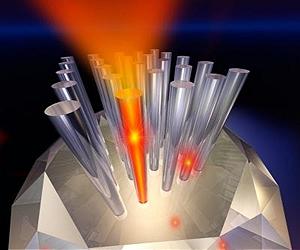Hubble (in green) and Chandra (in blue) data show the expanding shock wave.
Credit: ALMA/NASA
Physicist James Franson of the University of Maryland has captured the attention of the physics community by posting an article to the peer-reviewed New Journal of Physics in which he claims to have found evidence that suggests the speed of light as described by the theory of general relativity, is actually slower than has been thought.
The theory of general relativity suggests that light travels at a constant speed of 299,792,458 meters per second in a vacuum.
It's the c in Einstein's famous equation after all, and virtually everything measured in the cosmos is based on it, in short, it's pretty important. But, what if it's wrong?
Franson's arguments are based on observations made of the supernova SN 1987A, it exploded in February 1987.
Measurements here on Earth picked up the arrival of both photons and neutrinos from the blast but there was a problem, the arrival of the photons was later than expected, by 4.7 hours.
Scientists at the time attributed it to a likelihood that the photons were actually from another source.
But what if that wasn't what it was, Franson wonders, what if light slows down as it travels due to a property of photons known as vacuum polarization, where a photon splits into a positron and an electron, for a very short time before recombining back into a photon.
That should create a gravitational differential, he notes, between the pair of particles, which, he theorizes, would have a tiny energy impact when they recombine, enough to cause a slight bit of a slowdown during travel.
If such splitting and rejoining occurred many times with many photons on a journey of 168,000 light years, the distance between us and SN 1987A, it could easily add up to the 4.7 hour delay, he suggests.
If Franson's ideas turn out to be correct, virtually every measurement taken and used as a basis for cosmological theory, will be wrong.
Light from the sun for example, would take longer to reach us than thought, and light coming from much more distant objects, such as from the Messier 81 galaxy, a distance of 12 million light years, would arrive noticeably later than has been calculated, about two weeks later.
The implications are staggering, distances for celestial bodies would have to be recalculated and theories that were created to describe what has been observed would be thrown out. In some cases, astrophysicists would have to start all over from scratch.
More information: Apparent correction to the speed of light in a gravitational potential, J D Franson 2014 New J. Phys. 16 065008 DOI: 10.1088/1367-2630/16/6/065008















